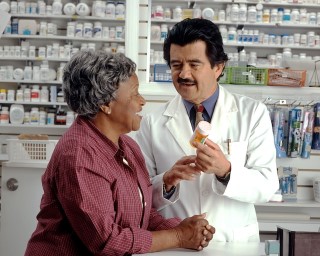Jack Miletic of Delray Beach is a spine physician with a focus on regenerative medicine as well as traditional treatments. In the following article, Jack Miletic explores what patients should expect from their doctors when it comes to managing chronic pain, as well as how to reduce dependence on opioid medications for chronic conditions.
According to the CDC, an estimated 50 million Americans live with some form of chronic pain on a daily basis. This represents around 20% of the adult population, suggesting a health crisis on the scale of an epidemic. The issue, though, is that chronic pain cannot be traced back to a single source in every patient. Jack Miletic of Delray Beach says that it’s also incredibly difficult to treat without the use of prescription medications.
As the nation is still recovering from the opioid epidemic of the mid-2000s, doctors are hesitant to start handing out pain medications on a wide scale. Unfortunately, this leaves patients in a bit of a bind. What should they expect from their doctors, and what can doctors really do? Dr. Miletic explores these questions and dives deeper into what it means for such a large swath of the population suffering from daily pain.
Jack Miletic on the Changing Perspectives
Pain is nothing new and—arguably—modern mankind deals with less pain than our ancestors did a thousand years ago. Jack Miletic explains that, thanks to advancements in medical science, we now have a better understanding of how to prevent disease, saving millions of people every year from the pain and suffering of childhood illnesses and basic bacterial infections.
Before modern times, pain wasn’t even viewed as a medical issue. Instead, it was seen as the hand of God directly afflicting the population for their sins. It was then up to the Church to absolve the population of its pain through forgiveness and devotion. Yet, as the Church lost its influence to modern science, people’s pain persisted. At that point, medicine began to view pain as a disease that could easily be treated.
Over the span of a few decades, medical practitioners began exploring the earliest forms of anesthesia—ether and chloroform. Old favorites stuck around as well though, including opium, which would later be distilled into morphine, cocaine, and alcohol. Fast forward to today, and we now have a wide range of medications that can knock you out with as little as a drop.
The Dawn of the Opioid Crisis
The year was 1996. The summer Olympics were kicking off in Atlanta, Georgia, the Rwandan Genocide was underway, and the Taliban had just seized Kabul. Meanwhile, in a lab in Stamford, Connecticut, medical researchers had successfully produced a new semi-synthetic opioid for the first time—oxycodone. Jack Miletic of Delray Beach says that this revolution in at-home pain relief would spark a wildfire that would burn through the nation.
At the time, Purdue Pharma—the developer behind oxycodone—marketed the new medication as a safe and low-risk way to treat chronic pain in a population left underserved by the medical industry. This pushed doctors to overprescribe the drug and encouraged millions of unsuspecting Americans to pick up an opiate addiction.
Jack Miletic of Delray Beach reports that, by the early 2010s, the effects had spread to every corner of the country, and otherwise upstanding members of the community were now left in shambles, trying to piece their lives back together. The CDC had since updated its guidelines on prescribing opiate medications, but the damage had already been done.
 What Patients Can Expect Today
What Patients Can Expect Today
After nearly a million people died of opioid addiction between 1999 and 2020, doctors have been forced to limit their use of prescription opiates to treat chronic pain. Today, patients seeking support for daily chronic pain can instead expect to receive non-addictive medications such as SSRIs and anti-inflammatories, as well as nonpharmacological interventions such as:
- Massage – Massage has been shown to relieve tension and relax stiff, tight, and painful muscles.
- Gel packs – Hot and cold packs can be used to reduce inflammation in the joints, helping to ease the pain of arthritis.
- Physical therapy – Patients experiencing chronic pain may benefit from gentle strength and mobility training.
- Relaxation techniques – Learning breathing and relaxation techniques can help to reduce feelings of anger and anxiety on days when the pain is worse.
In some cases, though, doctors will still prescribe opiate and opioid medications, though they are not to be taken on a daily basis or to treat non-severe pain.
The Bottom Line
The miracle of modern medicine has worked hard to alleviate all kinds of suffering, but in its endeavor to root out all pain, it unwittingly created an epidemic of addiction. Today, Jack Miletic of Delray Beach explains that doctors are now more aware of how widespread addiction can destroy lives, and so they prefer to rely on nonpharmacological interventions and safer, non-addictive pain medications.


